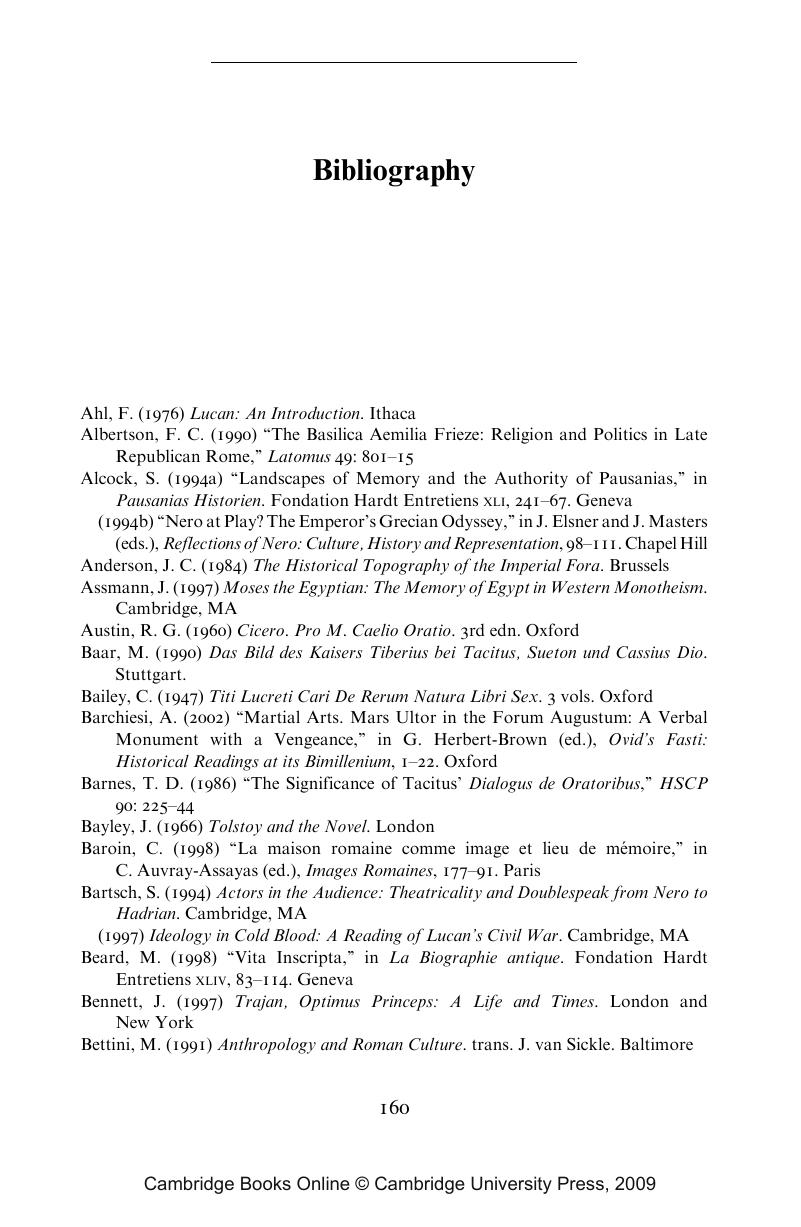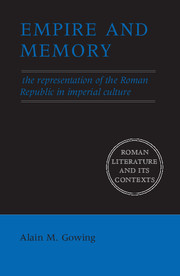Bibliography
Published online by Cambridge University Press: 02 December 2009
Summary

- Type
- Chapter
- Information
- Empire and MemoryThe Representation of the Roman Republic in Imperial Culture, pp. 160 - 169Publisher: Cambridge University PressPrint publication year: 2005



